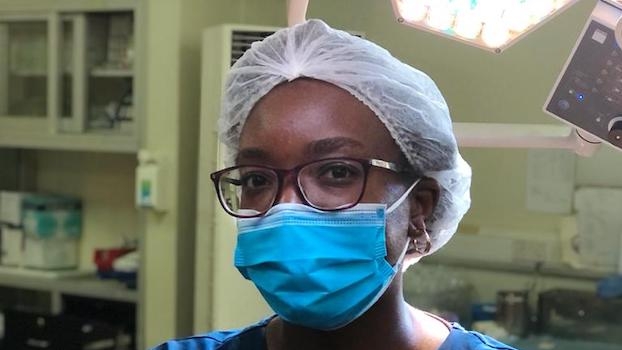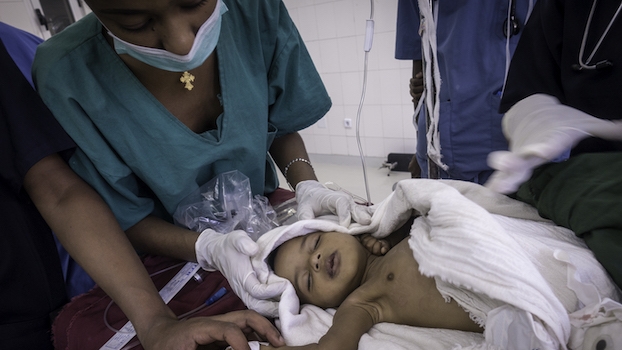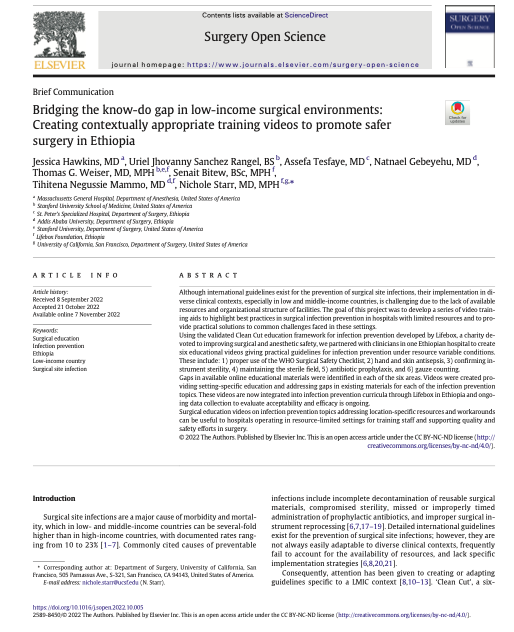
Bridging the know-do gap in low-income surgical environments: Creating contextually appropriate training videos to promote safer surgery in Ethiopia
Creating trainings aids for improved surgical infection prevention in low-resource hospitals
Find Lifebox resources for perioperative professionals - including publications, our online learning courses, and Lifebox workshop materials

Creating trainings aids for improved surgical infection prevention in low-resource hospitals
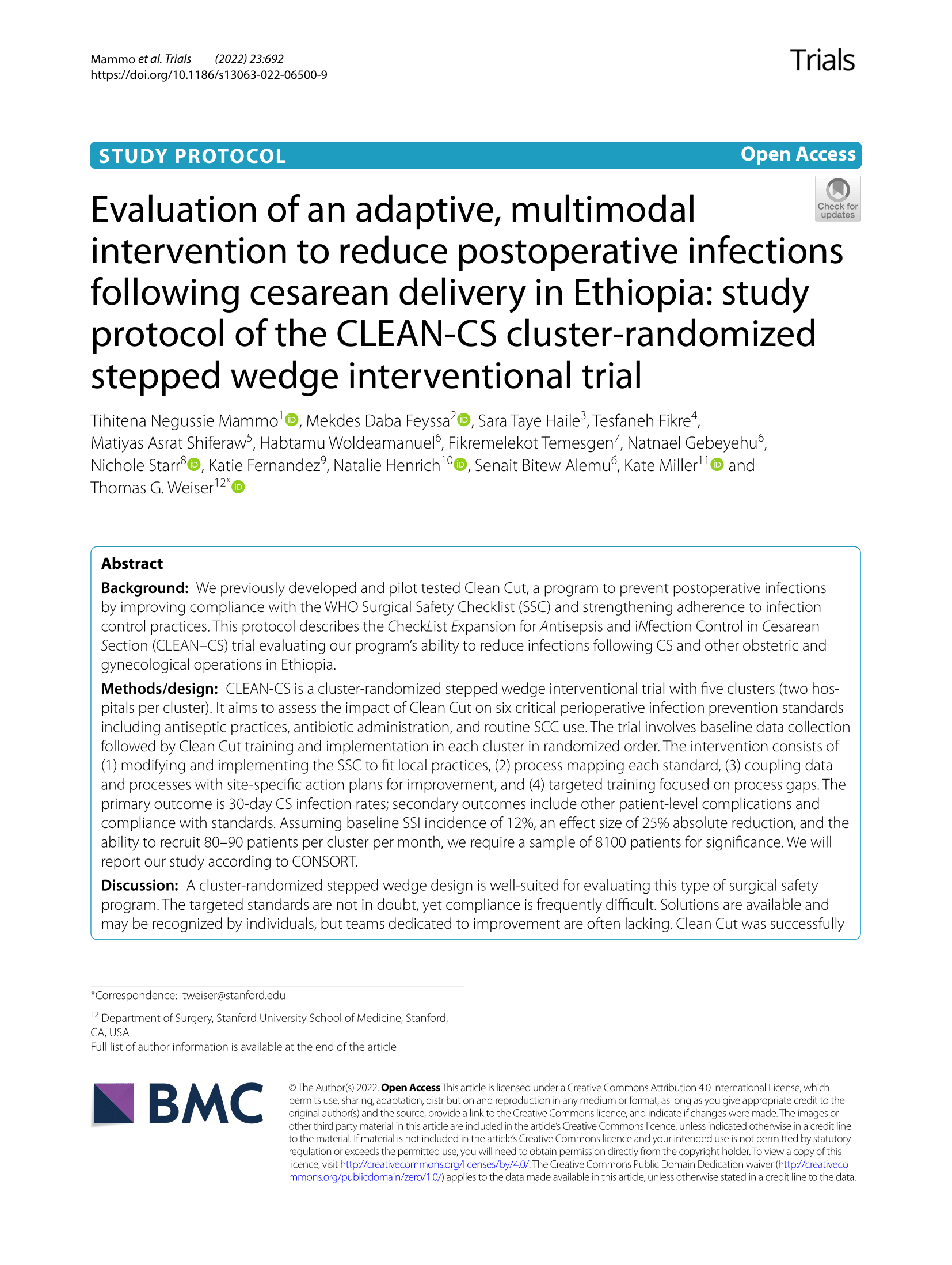
This protocol describes the CheckList Expansion for Antisepsis and iNfection Control in Cesarean Section (CLEAN-CS) trial evaluating our program's ability to reduce infections following CS and other obstetric and gynecological operations in Ethiopia.

Our survey findings suggest that perioperative clinicians report feeling unsafe at work during the COVID-19 pandemic. In addition, adjunct tools such as the COVID-19 Surgical Patient Checklist can help to improve perceived safety.
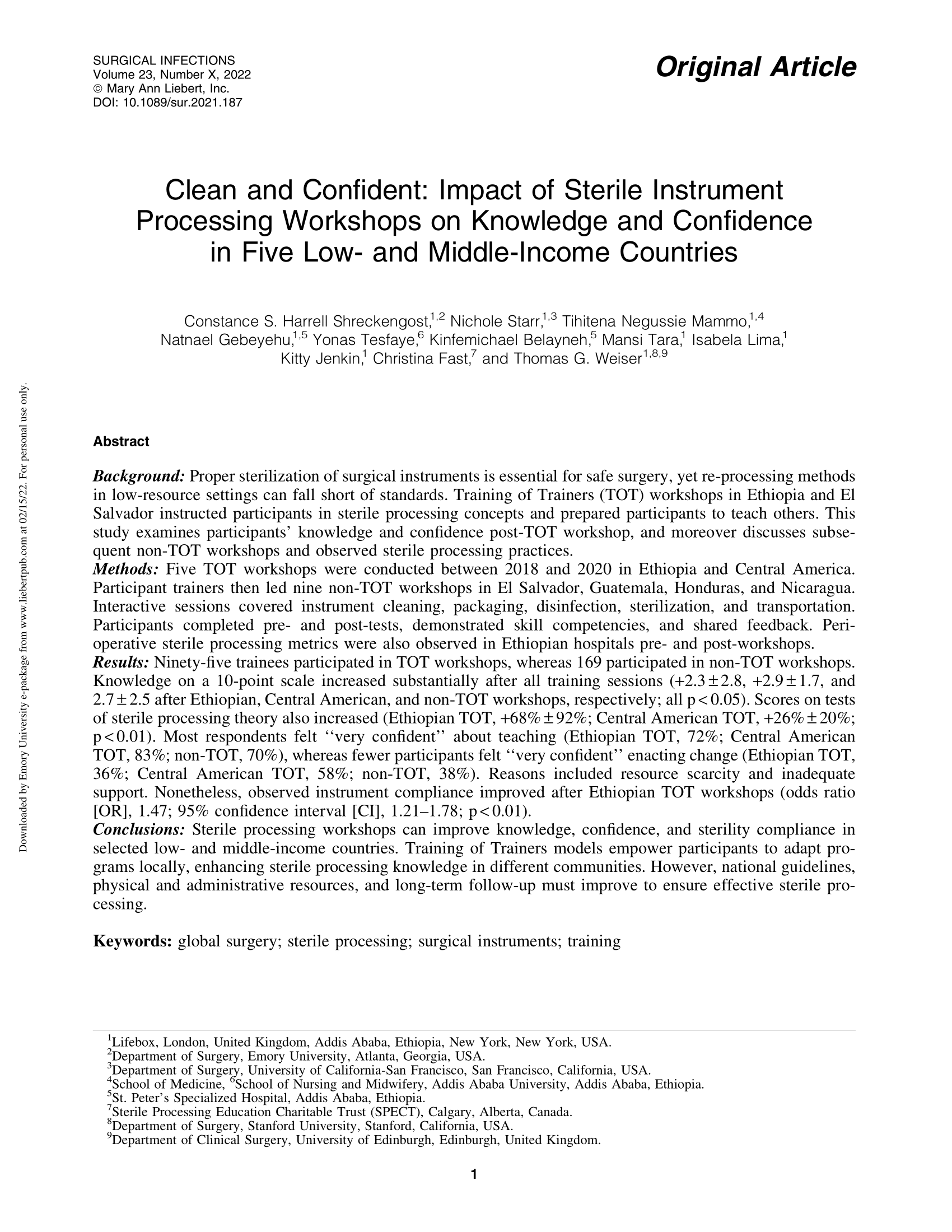
This study examines participants' knowledge and confidence post-TOT workshop, and moreover discusses subsequent non-Training of Trainers (TOT) workshops and observed sterile processing practices.
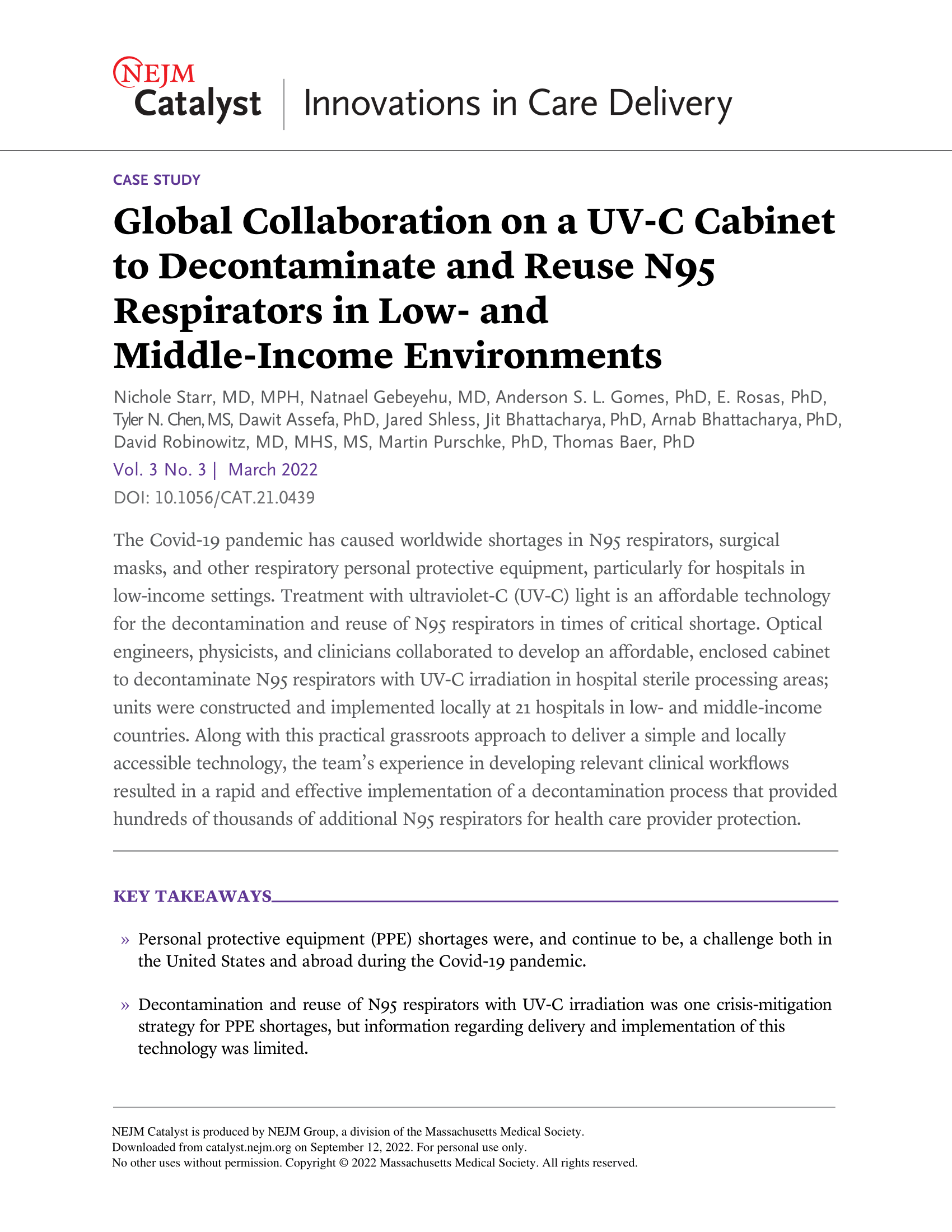
Working in multidisciplinary, interprofessional teams can leverage varied skill sets to enhance innovation and implementation in crisis situations.

This study found a high cancellation rate, most attributable to late start times leading to delays for the remainder of cases, and lack of preoperative patient preparation.

The ongoing, severe shortage of protective equipment and training gaps should be immediately remediated to prevent the loss of healthcare workers in lower-income environments.
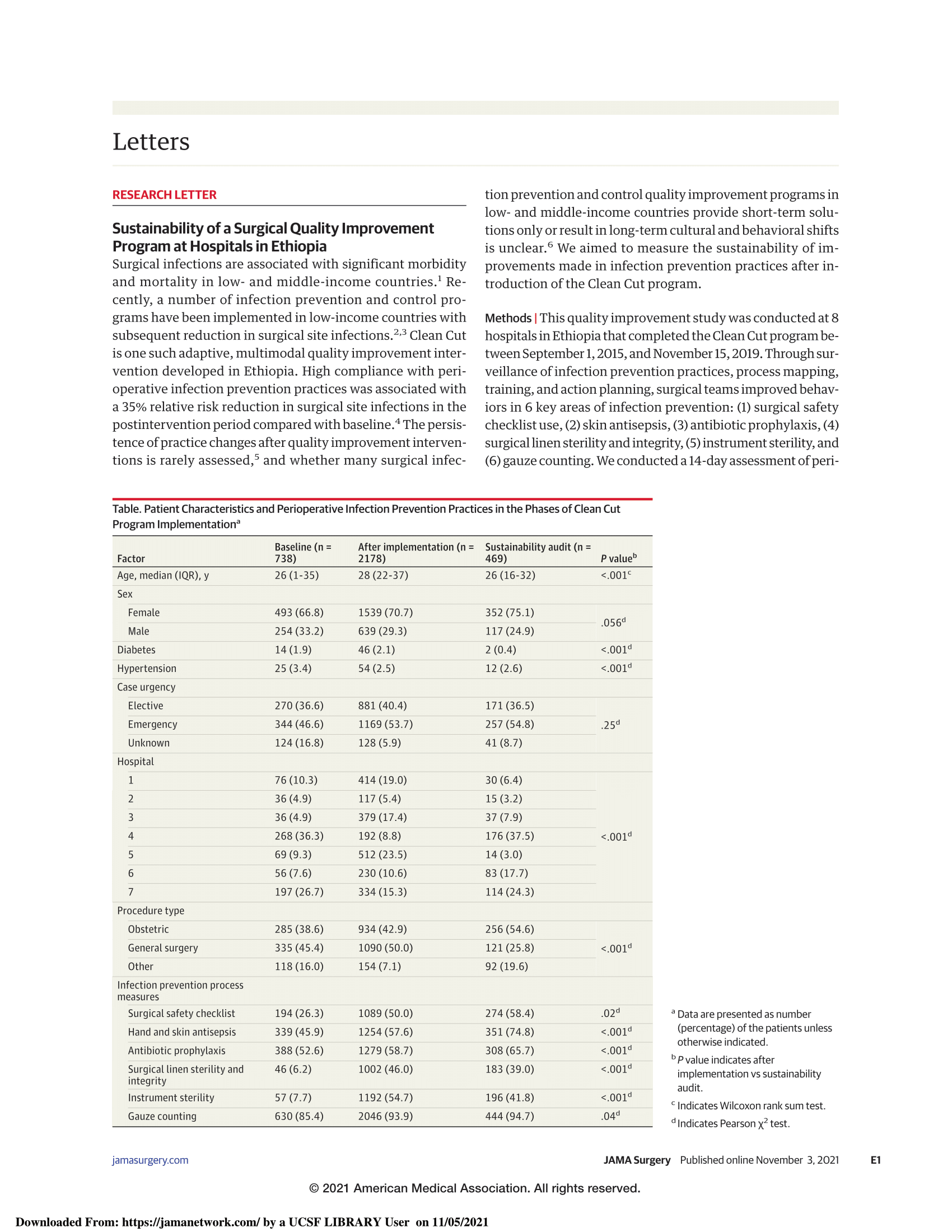
The results of the lasting impact of Lifebox’s surgical infection reduction program - Clean Cut - in The Journal of the American Medical Association (JAMA) Surgery.
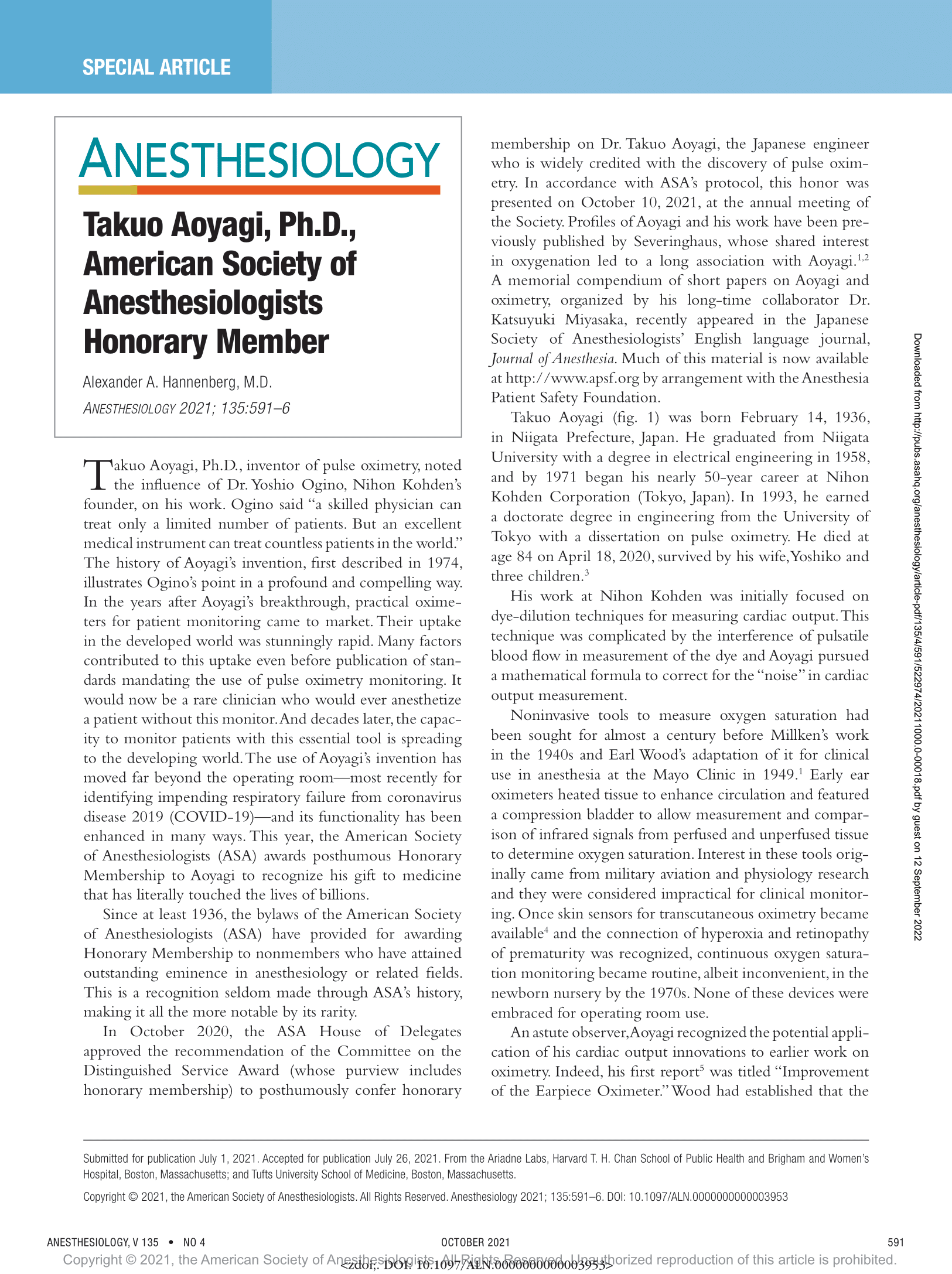
American Society of Anesthesiologists (ASA) awards posthumous Honorary Membership to Aoyagi to recognize his gift to medicine that has literally touched the lives of billions.
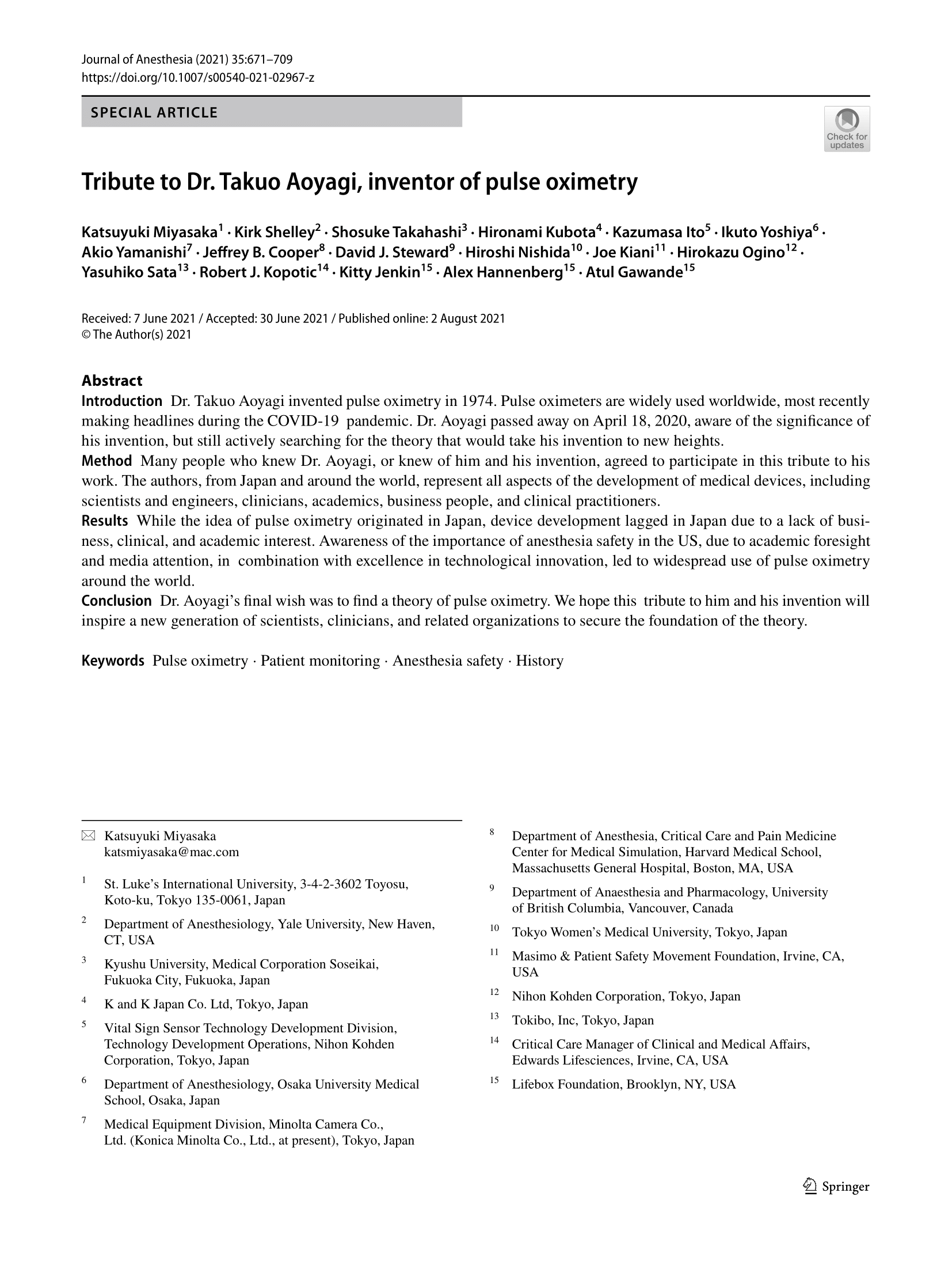
Dr. Aoyagi’s final wish was to find a theory of pulse oximetry. We hope this tribute to him and his invention will inspire a new generation of scientists, clinicians, and related organizations to secure the foundation of the theory.
